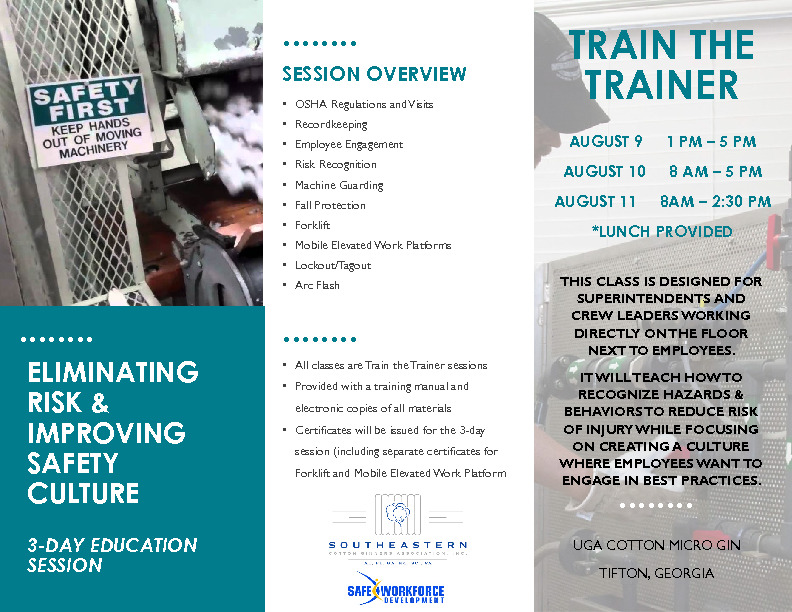We wanted to let everyone know that we’ve scheduled a Three-Day Safety seminar for early August in Tifton. The cost is $300 per person and the sessions are targeted at front line supervisors that will be conducting training and not necessarily managers. If you know you’d like to sign up, here’s the link. If you’d like more detail read on.
While cotton gins are considered Agriculture in the eyes of OSHA, warehouses are not. OSHA requires all lift truck drivers in cotton warehouses to be properly trained as part their safety program. Prior to the pandemic, the Safety and Insurance committee recommended that we hold Train-the-trainer programs for those members that wanted to have Trainers on staff. We had held a couple of them in 2019 with good success
We contacted the company we’ve been working with on these trainings and worked with them to expand the program. They developed a Three-Day Program that covers several general safety topics and includes the Train-the-Trainer for lift trucks and elevated work platforms.
Since this program was developed relatively recently, we will only hold one such program this year but plan on doing at least one and possibly 2 next year based on participation.
This program is targeted at the front-line supervisors and trainers that have the most influence on the crews. These are the ones conducting the training either formally or on-the-job as most of our ‘training’ tends to be. This is not a purely “rules and regs” but a practical ‘why’ kind of training on many general safety topics but it includes the Train-the-Trainer on lift trucks and powered elevated work platforms. Participants will leave with the knowledge and materials to train their own employees in accordance with OSHA’s regs.
Space is limited to 25 participants. Lunch will be provided for two days. The session will be at the Micro-Gin at the University of Georgia in Tifton August 9-11. The address is in the EventBrite sign-up. Please follow this link above for registration or click here for more details.
DSF


